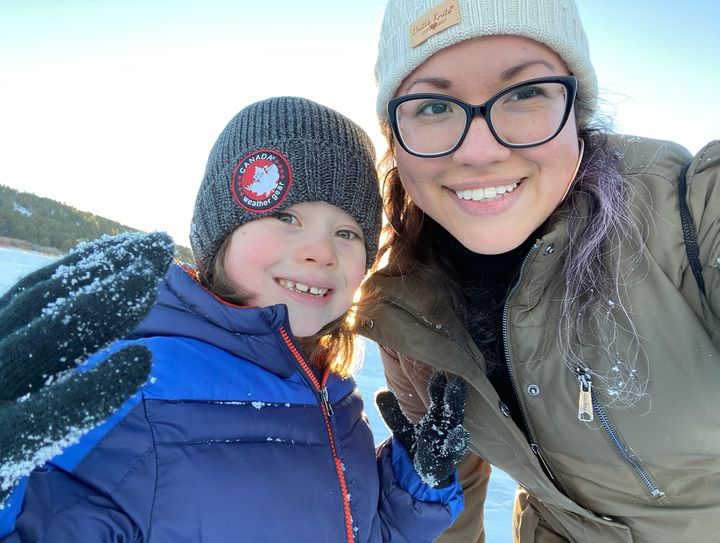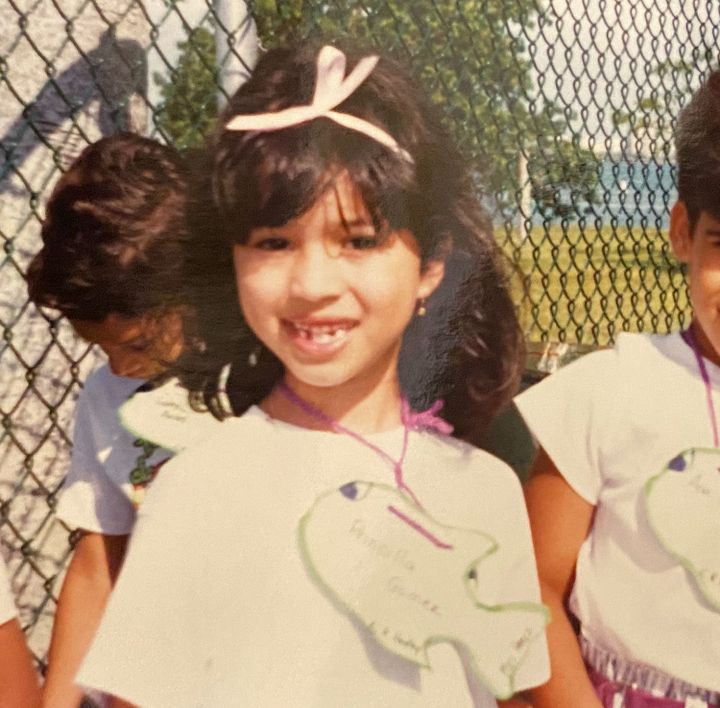News
As A Latina Child, I Refused To Speak Spanish. Here’s What I’m Doing Differently With My Son.
As a little girl, whenever someone would speak to me in Spanish, I was adamant about responding in English. That’s not because I didn’t understand. I grew up in a Spanish-speaking household, learning how to speak English alongside my parents, who moved here from Nicaragua during the Sandinista Revolution. While my father picked up English from his co-workers on construction sites, my mother did her best to learn from books, TV and the occasional English class. My own education came from television, especially PBS shows like “Mr. Rogers” and “Reading Rainbow.”
By the time I entered kindergarten, English was my primary language. While I was already slowly rejecting my mother tongue, it wasn’t until second grade that I would truly begin to feel shame around it. Despite living in Miami, a bastion of latinidad and bilingualism, among school-aged kids, preferring to speak Spanish was seen as “lesser than,” “uncool,” a sign that you just weren’t “American enough.” In fact, there were a number of playground hierarchies going on in my hometown — I was also teased for my more Indigenous features, for being Central American, and called a “tira flecha” (arrow thrower). So while I still spoke Spanish with my non-English speaking family members, the internal rejection of my bilingualism, and even of my heritage as a whole, only grew.
Yazyth Norelius, founder of One of a Kind Interior Design in Denver, tells me she had a similar experience growing up. Born in Colombia and raised by a Panamanian mother in Miami, Norelius says she tried her hardest to only speak English and reduce her accent as much as possible.
“People with accents were considered ‘refs’ and were made fun of,” says Norelius. (At the time, kids in Miami would refer to Cuban refugees — and really, anyone who had a thick accent and/or didn’t speak English — as “refs.”)
Norelius says she was in ESL (English as a Second Language) classes for the first few years of elementary school.
“Once you’re an ESL kid, you’re always an ESL kid. Even though I tested out of ESL in second grade, the kids still made fun of me,” she says. “I came home crying everyday until my mom transferred me to another elementary school so I could start over.”
Understanding internalized racism
Internalized racism wasn’t a phrase that I or Norelius knew back then. Even as a teen, I still mostly avoided speaking Spanish, though I didn’t understand why. And it wasn’t until much later that I would begin to understand the complexities at play when it came to rejecting my bilingualism, and in turn, my latinidad.
“There are several socio-cultural factors at play when Latine children, particularly those who are bilingual, might avoid speaking Spanish,” says Natalie Rosado, LMHC and Mental Health Expert at Sanity & Self: Self-Care Women’s App. Rosado says immigrant and first-generation Latine children often face intense pressure from peers, schools, and sometimes even their own families to assimilate into the dominant culture, which often means sticking to speaking English.
“Avoiding Spanish can sometimes be an unconscious strategy to align more closely with their friends and the larger society they spend the most time in, thereby reducing feelings of otherness,” says Rosado. Some other factors include a preference for English within the child’s school (causing kids to internalize that English is somehow “better”) and perceived social stigma (especially due to fear of discrimination and bullying).
“Being a first-generation Mexican American, I know individuals who were raised bilingual and chose to avoid speaking Spanish out of fear of being bullied or harassed by non-Spanish speakers,” adds Noe Avila, LMFT and Founder of Noe Avila Therapy. “The desire to fit into American culture is greater than appreciating the gift of being bilingual.”
Avila says he also believes the political climate can significantly contribute to whether individuals feel safe speaking their native language. “The rhetoric and policies surrounding immigration and multiculturalism can either encourage or discourage people from expressing their cultural and linguistic heritage,” says Avila.
Additionally, Avila says the harmful stigma associated with darker-toned Latines contributes to discrimination and inequality in many areas of their lives, including whether or not they are bullied for speaking Spanish.
“Lighter-skinned Latine individuals may be perceived as having higher social status and therefore face less pressure to abandon their cultural practices, including language,” adds Rosado.
And there are even more reasons why many Latine kids end up rejecting their heritage language.
“Bilingual people are sometimes shamed by those closest to them for not using Spanish in the ‘right’ ways; maybe their pronunciation is different or they don’t know all the same words or use them in the same ways as people who only know Spanish or who grew up outside the U.S.,” says Dr. Cindy Blanco, Senior Learning Scientist at Duolingo.
Nowadays, Blanco says the “No Sabo Kid” movement, created by younger Latines who grew up in Spanish-speaking households but are embracing their lack of full Spanish proficiency, is helping empower bilingual folks to embrace those differences. But back in the 1990s in Miami? Not so much.
Embracing my bilingualism
It wasn’t until my first visit to Nicaragua at the age of 20 that I would not only embrace my bilingualism, but would come to realize that I’d hamstrung my own learning by rejecting it. And a decade later, when I became a mother, I knew I wanted to teach my son Spanish. At first it wasn’t too difficult, but once I moved to Colorado, it became a much larger struggle. Without my Spanish-speaking family and friends around, I realized I had no one to practice with. And once my son began school, I found that unlike Miami’s plethora of bilingual schools, Denver only has a handful of dual language programs, all of which are highly competitive.

While I’m grateful that I was raised bilingual, I hate that it took me decades to fully understand just how special it is to speak two different languages. More so, I hate that all that internalized racism and xenophobia that caused me to quiet down my bilingualism tainted my childhood and that of many kids around me. Blanco recommends adults who grew up with shame around their heritage language take steps to overcome this stigma by reconnecting with their heritage, seeking out therapy or support groups, getting involved with advocacy and educational efforts that promote bilingualism, or even finding bilingual role models. While it’s taken some time, I’ve managed to take some of those steps here in Denver, slowly finding my way into more Latine spaces to finally celebrate my roots.
And while I’m saddened that I’ve become a weaker Spanish speaker over time, I certainly haven’t given up teaching my son Spanish. Our lessons at home and on learning apps are slow and steady. But more importantly, my son is not growing up feeling like it’s something shameful. Instead, he knows that being bilingual and being Latino are both things to be proud of. He may not have a strong grasp of it yet, but I live for those big smiles he gives me whenever he manages to sneak in a few Spanish words into a sentence. Poquito a poco, we’ll get there.
Read more

